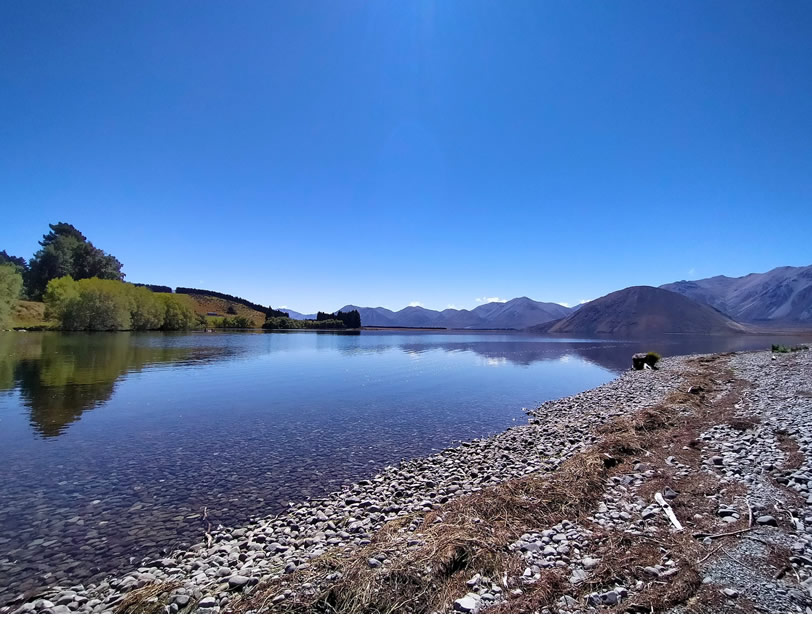Geography and Landscapes:
Canterbury is renowned for its diverse and awe-inspiring geography. The region is dominated by the Canterbury Plains, a vast expanse of fertile farmland framed by the Southern Alps to the west and the Pacific Ocean to the east. Rivers crisscross these plains and offer an inviting, bucolic setting.
To the west, the Southern Alps rose dramatically, forming the backbone of the South Island. This range is home to some of New Zealand’s tallest peaks, including Aoraki / Mount Cook, the country’s highest mountain. The Alps provide countless opportunities for hiking, mountaineering, and skiing, making it a playground for outdoor enthusiasts.
To the east, the coastline features pristine beaches, rugged cliffs, and picturesque bays. The Banks Peninsula, with its charming town of Akaroa, is a striking volcanic formation that offers unique landscapes and a taste of French-inspired culture.
Culture and Heritage:
Canterbury is steeped in history and boasts a unique cultural heritage. The region’s Maori roots are deeply embedded in its landscape, with numerous sites of cultural significance. The Ngāi Tahu, the local Maori tribe, have a strong presence in Canterbury, and their stories and traditions are an essential part of the region’s identity.
Christchurch, the largest city in Canterbury, is known for its heritage and arts scene. The city’s Gothic Revival architecture and historical buildings, such as the Christchurch Cathedral, add a distinctive charm to the urban landscape. The Canterbury Museum provides insight into the region’s history and natural world.
Outdoor Adventures:
Canterbury is an adventurer’s paradise. The Southern Alps offer opportunities for mountaineering, skiing, and tramping (hiking), with the famous Routeburn Track being a must-visit for hikers. Aoraki / Mount Cook National Park is a UNESCO World Heritage site and a hub for alpine activities.
The region’s rivers and lakes are perfect for kayaking, fishing, and jet boating, while the coastline beckons with surfing, whale watching, and dolphin encounters. The lush forests and pristine landscapes provide an excellent backdrop for outdoor exploration and wildlife encounters.
Agriculture and Cuisine:
Canterbury’s rich plains are the agricultural heartland of New Zealand. The region is known for its pastoral landscapes, and visitors can experience the farm-to-table culture through local markets and wineries. Canterbury lamb and venison are particularly renowned for their quality and flavor.
The Waipara Valley, located in North Canterbury, is famous for its vineyards, producing world-class wines that have gained international recognition.
Wellington, New Zealand
Wellington, New Zealand, is a city that thrives on its unique blend of culture, nature, and government. With a rich cultural scene, a stunning natural landscape, and a taste of authentic New Zealand cuisine, it offers an unforgettable experience for residents and travelers alike. Whether you’re an outdoor enthusiast, a culture buff, or a foodie, Wellington has something special to offer, making it a must-visit destination in the Land of the Long White Cloud.
Keywords :
Canterbury, New Zealand, Geography, Canterbury Plains, Southern Alps, Pacific Ocean, Banks Peninsula, Akaroa, Maori culture, Ngāi Tahu, Christchurch, Gothic Revival architecture
Introduction
Madagascar, with its unparalleled biodiversity, stunning landscapes, and unique culture, has increasingly become a sought-after destination for adventurous travelers. This island nation in the Indian Ocean offers a wide range of experiences for those looking to immerse themselves in nature, culture, and adventure. In this article, we’ll delve into the fascinating world of tourism in Madagascar.
Natural Wonders and Wildlife
Madagascar is renowned for its incredible biodiversity, with numerous national parks and reserves offering opportunities to witness unique flora and fauna.
Visitors can explore rainforests inhabited by lemurs, vibrant coral reefs for snorkeling and diving, and arid deserts teeming with endemic species.
Lemur Encounters
Madagascar is often called the “Land of Lemurs” for its diverse lemur species. Lemur watching tours allow visitors to witness these charismatic creatures in their natural habitat.
Popular lemur destinations include Andasibe-Mantadia National Park and Anjajavy Private Nature Reserve.
Unique Landscapes
The country’s varied topography includes otherworldly limestone formations in Tsingy de Bemaraha, the Avenue of the Baobabs with its ancient and massive trees, and the highland plateaus of Antananarivo.
Cultural Immersion
Malagasy culture is rich and diverse. Visitors can experience traditional ceremonies, music, dance, and local cuisine.
Explore the unique customs and traditions of the Malagasy people, such as famadihana (the turning of the bones) and the offerings to the ancestors.
Cuisine
Malagasy cuisine offers a fusion of flavors influenced by African, Asian, and European traditions.
Try local dishes like “romazava” (a meat and vegetable stew), “brochettes” (grilled skewers), and fresh seafood along the coast.
Adventure Activities
Madagascar provides a range of adventure activities, including hiking, mountain biking, and water sports.
Trek through dense forests, explore underwater caves, or go kite surfing on pristine beaches.
Sustainable Tourism
Madagascar’s unique ecosystems are fragile and face threats from deforestation and habitat destruction. Sustainable and responsible tourism practices are crucial to protect the environment and wildlife.
Consider staying in eco-friendly lodges and supporting local conservation efforts.
Local Handicrafts
Madagascar is known for its unique handicrafts, such as woven baskets, jewelry made from local gemstones, and traditional textiles.
Support local artisans by purchasing their handcrafted goods as souvenirs.
Hidden Gems
While well-known destinations like Nosy Be, Isalo National Park, and Ranomafana National Park are popular, don’t overlook the lesser-known spots, which often offer quieter and more intimate experiences.
Travel Preparations
Research visa requirements, vaccinations, and other travel logistics before your trip.
Respect local customs and traditions, such as asking for permission before taking photos of people or their property.
Conclusion
Madagascar, with its extraordinary biodiversity and vibrant culture, is a destination that promises unforgettable adventures for travelers who seek unique experiences. Whether you’re exploring pristine rainforests, observing lemurs, or immersing yourself in local customs, the island offers a diverse range of activities. Moreover, responsible tourism is essential for preserving Madagascar’s ecological treasures, ensuring that future generations can also enjoy this enchanted world.
Keywords :

